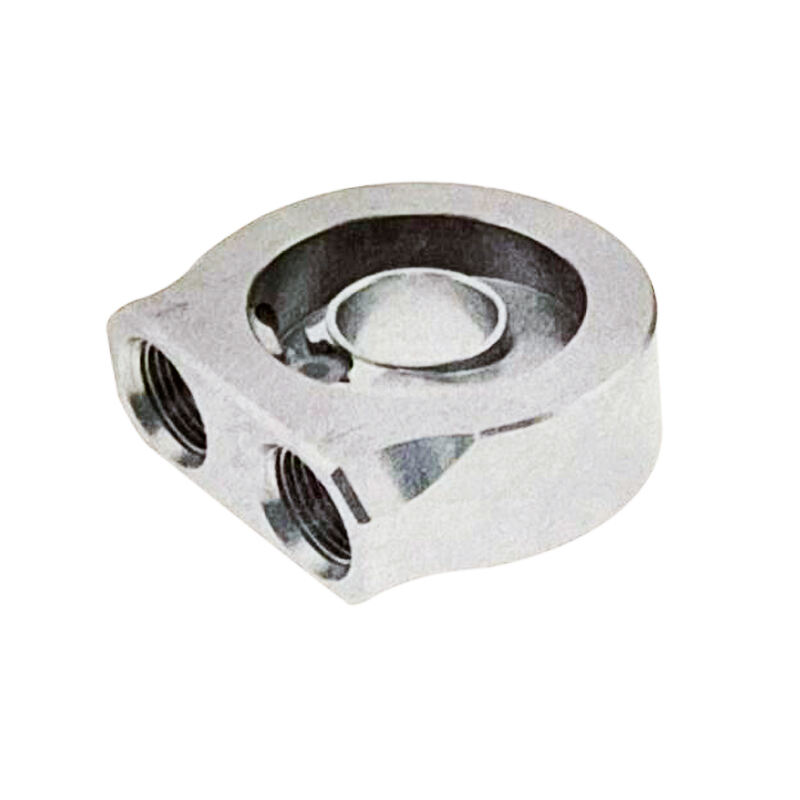High-performance AN fittings play a crucial role in commercial fleets by providing leak-proof seals, which are essential for maintaining optimal fluid flow and preventing wastage. Their reliability and effectiveness in sealing hoses better than traditional methods address one of the key concerns in fleet management—avoiding fluid leaks that can lead to operational hazards. Aluminum AN fittings, popular for their lightweight design, contribute to reducing the overall weight of vehicles, enhancing fuel efficiency significantly. This reduction in weight is crucial, especially for fleets aiming to optimize fuel usage across long distances. Moreover, the corrosion resistance of AN fittings ensures they can withstand harsh environments without deterioration, thus extending the lifespan of fleet systems and diminishing the need for frequent replacements.
Utilizing AN fittings enhances the reliability of the fuel system, which is vital for preventing unexpected breakdowns and the associated downtime that can be costly for fleet operations. Research has shown that investing in high-quality AN fittings can reduce overall maintenance costs by 20-30%, thanks to fewer repairs and replacements. This reduction in maintenance costs allows fleet managers to reinvest savings into other aspects of fleet improvement. When properly selected and maintained, AN fittings contribute to improved fuel efficiency, resulting in significant cost savings over time. This is particularly beneficial for fleets where fuel efficiency directly correlates with operational expenses. AN fittings are not only a cost-effective solution but also a strategic investment for those looking to optimize their fleet performance.
The Carby 2xAN6 Fuel Regulator stands out for its precision pressure control, a feature crucial for maintaining consistent fuel delivery in fleet operations. This model is compatible with multiple fuel types, including E85 and alcohol, which adds versatility for different fleet vehicles. Its compact design simplifies installation, particularly in the space-constrained environments typical of commercial vehicles.

Male AN to SAE Quick Disconnect fittings offer versatile connectivity for fleet vehicles. These fittings enable swift changes between components, crucial for minimizing downtime during maintenance and repairs. Their robust design ensures high-pressure tolerance, making them ideal for demanding fleet operations. By facilitating rapid hose and component changes, these fittings enhance overall workflow efficiency in fuel systems.

The 2xAN10 ORB Sandwich Block Kit provides a streamlined approach to fluid management by integrating multiple connections into a single unit. This innovation reduces the number of necessary fittings, thereby minimizing potential leak points and enhancing system integrity. Furthermore, the kit accommodates various fluids, making it versatile for heating, cooling, and lubrication tasks within fleet operations.

AN fittings are integral in ensuring seamless connections between systems, particularly with inline fuel filters and fuel storage tanks. Their use ensures efficient fuel flow throughout the fleet's fuel system, minimizing disruptions in performance. By selecting the appropriate AN fittings, fleets can achieve enhanced filtration performance, which contributes to the longevity of fuel systems. Beyond ensuring seamless integration, this also prevents common issues such as fuel starvation or overpressure, which are critical for safeguarding engine performance and reliability. As suggested by Kanga Motorsports, AN fittings provide secure, reliable seals that outperform traditional methods, emphasizing their role in the maintenance of optimal fuel system conditions.
AN fittings are particularly suitable for brake line and transmission cooling applications. Their ability to provide reliable connections under high pressure makes them indispensable for maintaining the integrity of these critical systems. AN fittings' adaptability supports diverse styles of brake and cooling lines, enabling their application across a wide array of fleet vehicles, enhancing overall fleet reliability. Proper installation of AN fittings ensures optimal operation of safety-critical systems such as brakes, which is paramount for fleet safety. This establishes AN fittings as a valuable component in managing the complexities of fleet maintenance, facilitating efficient operation and reducing potential downtime caused by system failures.
When selecting AN fittings for heavy-duty use, it's essential to weigh the merits of aluminum versus steel. Aluminum fittings are favored for their lightweight and corrosion-resistant properties, making them ideal for applications where weight savings are crucial. On the other hand, steel fittings offer superior strength and durability, better suited for environments that demand robust performance. Understanding the specific requirements of your operating environment is key to making an informed choice. For example, aluminum is often chosen for racing applications due to its weight advantages, while steel is preferred in rugged industrial settings where strength is paramount. Studies have shown that selecting the right material significantly influences the longevity and performance of fittings, which in turn impacts overall fleet efficiency.
Ensuring the safety and reliability of AN fittings starts with choosing those that meet established industry certifications and quality assurance standards. Organizations such as the Society of Automotive Engineers (SAE) and the International Organization for Standardization (ISO) set the guidelines that help fleet managers select high-quality components. Compliance with these standards guarantees that the fittings not only perform as expected but also reduce the risk of failure. By adhering to quality assurance standards, fleets can minimize potential hazards associated with fitting failures, which are critical for maintaining the safety and operational reliability of the entire fleet. Adhering to certifications and standards is vital for operators seeking to enhance their fleet's safety profile and performance consistency.